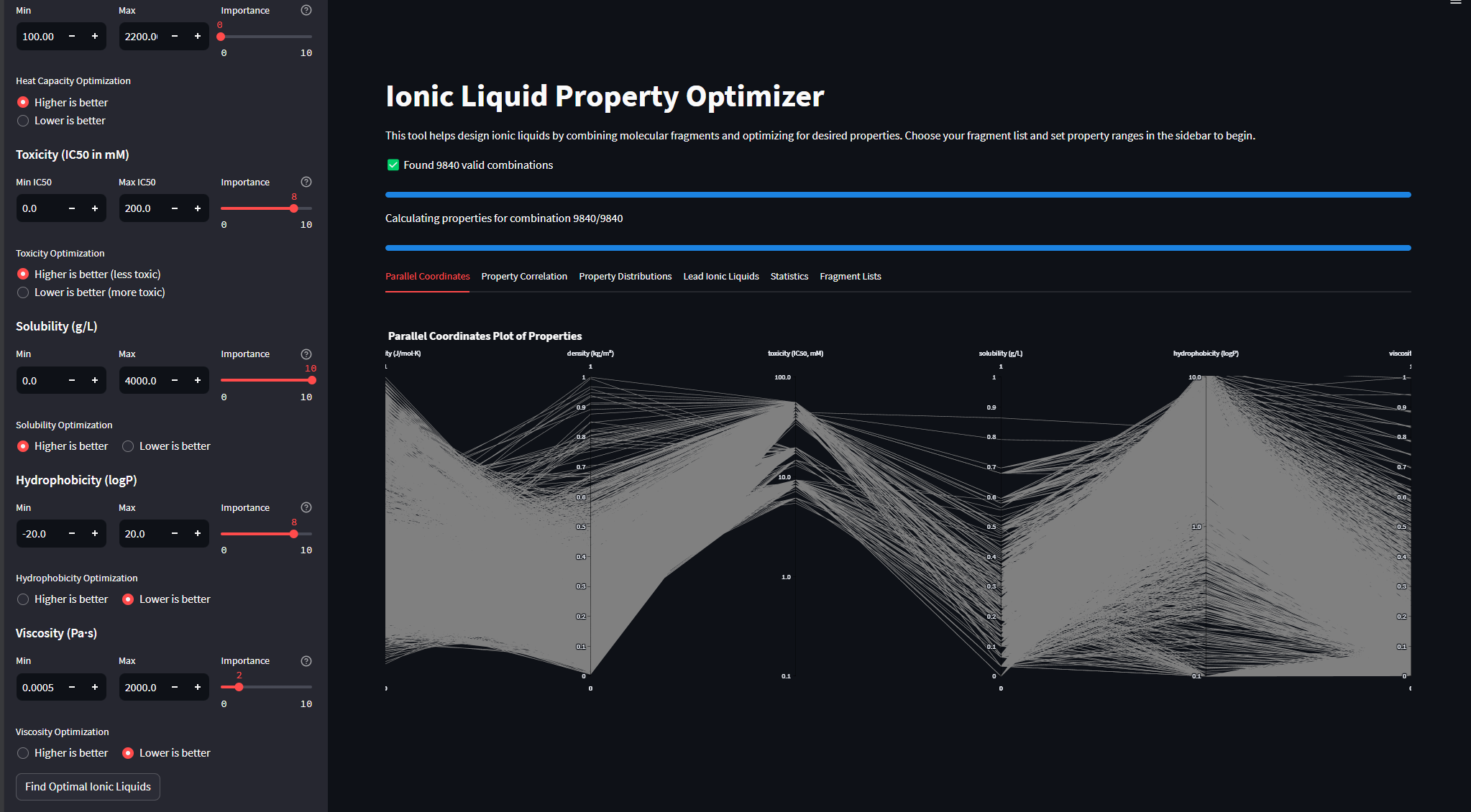Systematic Investigation of Ionic Liquid Properties
Our computational framework enables researchers to methodically evaluate ionic liquid candidates based on theoretical physicochemical properties, facilitating more efficient experimental design and characterization.
Explore Capabilities